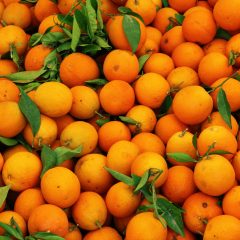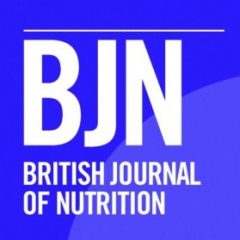Click here to view additional related posts Historical Documents Other Resources Historical Documents “When Does it Pay to Plant Bt Corn? Farm-Level Economic Impacts of Bt Corn, 1996-2001,” report by Dr. Benbrook Research committee report from 1998, “Bt Corn and European Corn Borer: Long-Term Success Through Resistance Management” “Insecticidal toxin in root exudates from Bt […]
Bacillus thuringiensis is a genetic modification that has been widely used since the mid 1990s. So-called Bt corn and cotton manufacture their own, natural bioinsecticide targeting certain Lepidopteran insects like the European corn borer, corn rootworm, and the cotton budworm.
Read More, References, Comment »
Many scientific teams in Europe are trying to develop reliable and affordable tests to differentiate between organic and conventional foods. For many crops, pesticide residue levels are considered the best way to make such a determination, but in the case of citrus, this approach is unreliable. In the Mediterranean region where most of Europe’s citrus […]
Read More, References, Comment »
Recent evidence has suggested that moderate consumption of red wine results in a decreased risk of cardiovascular disease. This is attributed to the antioxidant effect of the polyphenolic compounds in red wines. The major antioxidant in red wines – resveratrol – is a stilbene shown to have anticancer effects. However, wines have also been shown […]
Read More, References, Comment »
General Organic Diet Improves Indicators of Health in a Novel European Experiment “Food For Thought: Researchers Investigating Different Farming Practices Should Not Have to Pick Sides,” 2014 editorial in Nature “Novel Approach for Food Safety Evaluation: Results of a Pilot Experiment To Evaluate Organic and Conventional Foods,” Journal of Agriculture and Food Chemistry article, 2004 Italian Scientists Develop […]
Frequently Asked Questions About the Study: Średnicka-Tober D. et al. (2016). “Composition differences between organic and conventional meat; a systematic literature review and meta-analysis.” British Journal of Nutrition, February 16, 2016. Authors: Dominika Średnicka-Tober, Marcin Barański, Chris Seal, Roy Sanderson, Charles Benbrook, Håvard Steinshamn, Joanna Gromadzka-Ostrowska, Ewa Rembiałkowska, Krystyna Skwarło-Sońta, Mick Eyre, Giulio Cozzi, Mette Krogh Larsen, […]
Frequently Asked Questions About the Study: “Higher PUFA and omega-3 PUFA, CLA, α-tocopherol and iron but lower selenium concentrations in organic milk: a systematic literature review and meta- and redundancy analyses.” February 16, 2016. British Journal of Nutrition Authors: Dominika Średnicka-Tober, Marcin Barański, Chris J. Seal , Roy Sanderson, Charles Benbrook, Håvard Steinshamn, Joanna Gromadzka-Ostrowska, Ewa Rembiałkowska, Krystyna […]
EMBARGOED UNTIL: 00:01Hrs Tuesday 15th July 2014 – set by the academic journal British Journal of Nutrition Source Information: “Higher antioxidant concentrations and less cadmium and pesticide residues in organically-grown crops: a systematic literature review and meta-analyses.” Baranski, M. et al. British Journal of Nutrition, July 15th 2015. New study finds significant differences between organic […]
Read More, References, Comment »
Almost all beef cattle entering feedlots in the United States are given hormone implants to promote faster growth. The first product used for this purpose – DES (diethylstilbestrol) – was approved for use in beef cattle in 1954. An estimated two-thirds of the nation’s beef cattle were treated with DES in 1956 (Marcus, 1994, cited […]
Read More, References, Comment »
A European team lead by the Swiss scientist Lukas Rist has found that mothers consuming mostly organic milk and meat products have about 50 percent higher levels of rumenic acid in their breast milk (Rist et al., 2007). This Conjugated Linoleic Acid is responsible for most of the health benefits of CLAs in milk and […]
Read More, References, Comment »






